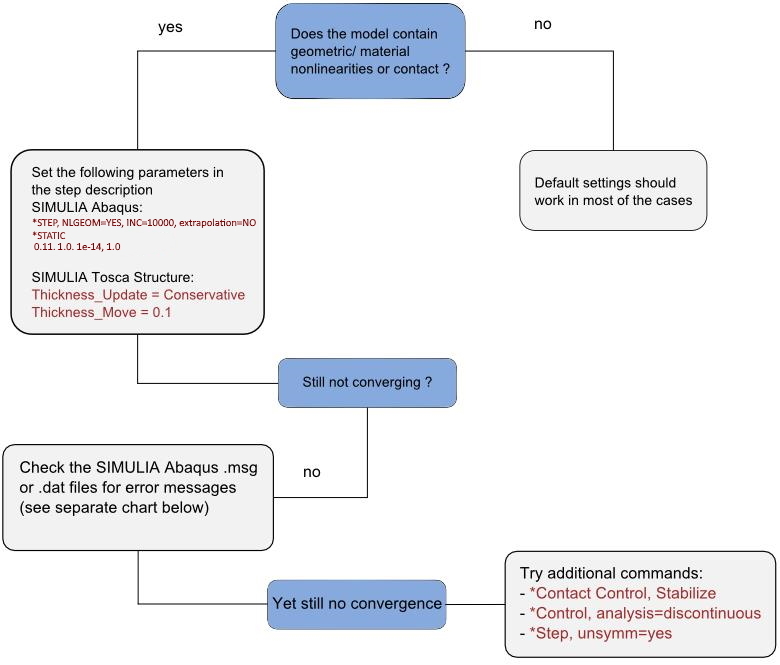Guidelines for Optimization of Structures with Nonlinear Behavior | ||
| ||
Sizing Optimization in the Context of Nonlinear Structural Analysis
 |
The above setup is considered to be stable for running sizing optimization of structures with
nonlinear behavior. Even though the settings consume more time for convergence, the
optimization can converge in the first attempt. A recommendation for the settings:
small initial time increment, THICKNESS_MOVE = 0.1,
THICKNESS_UPDATE = CONSERVATIVE. If there are still convergence
issues on the solver side, look for the above mentioned warnings in the
Abaqus
*.msg and *.dat files. One of the trivial methods of stabilizing a nonlinear
optimization task is by increasing the frozen domain. If convergence issues remain,
impose additional constraints on displacement or structural stiffness to further
stabilize the optimization procedure.
Manufacturing Constraints in the Model
In cases where the model contains manufacturing restrictions:
- It is crucial to set the correct origin of the co system and the axis corresponding to the restrictions in the parameter file.
- In the case of nonlinear problems, if the optimization ends in the solver convergence issues, the recommendation to remove the manufacturing constraints and solve the convergence issues. After obtaining a converged result, impose the restrictions one after the other.
Thermal Expansion in the Model
For thermal expansion problems, the
recommendation is to use the ENERGY_STIFF_MEASURE design response instead
of the STRAIN_ENERGY design response.
Contact in the Model
For highly nonlinear contact problems,
the automatic stabilization technique offered by the Abaqus solver is the recommendation. This option helps automatically control rigid body motion
before the contact closure restrains such motion, which can be activated by
*CONTACT CONTROLS, STABILIZE command. By default, the auto-frozen option
is activated in Tosca Structure, which affects regions with contact, load, and displacement boundary conditions. Hence,
it is important to deactivate the Auto frozen option AUTO_FROZEN=OFF to
acquire the contact regions as design domain in cases where it is required. Note, this
setting can lead to solver convergence issues.
Minimize Stress as Objective
In cases where stress design responses are used to define the objective function, the recommendation is to give reference values for the corresponding design responses. If stress design responses are used in the model, the recommendation is to use sensitivities calculated by the Abaqus solver.